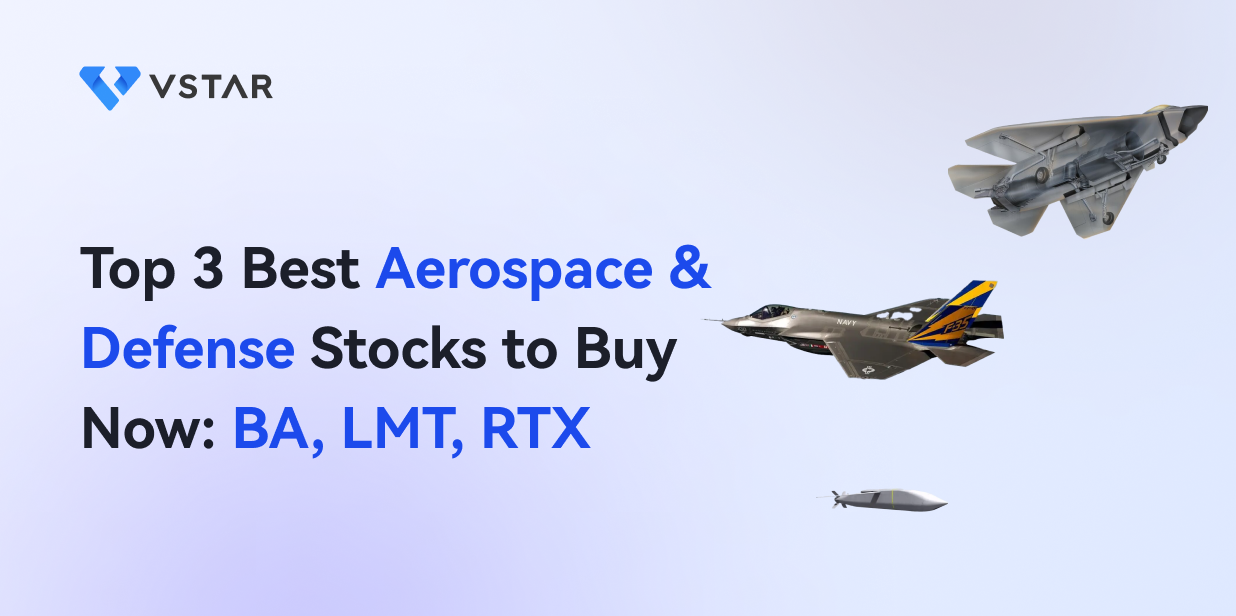The aerospace and defense industry (A&D) is a huge and varied sector that serves both military and commercial markets. It makes and provides various products and services for air, sea, and land defense and transportation. The A&D industry should grow to $1076.56 billion by 2027 due to more government spending, passenger travel, and new technologies and segments, which should be of utmost importance to intending investors.
How can you invest in this profitable industry? What are the best aerospace and defense stocks to buy now? And what are the challenges and risks for these companies? This article will answer these questions and more. It will give you an overview of the A&D industry and its segments and trends. It will also compare the financials, strengths, weaknesses, opportunities, and threats of three top A&D companies: Boeing Co (BA), Lockheed Martin Corp (LMT), and Raytheon Technologies (RTX). It will recommend which stock to invest in.
Finally, it will show you how to trade aerospace and defense stocks CFD with VSTAR, a global trading platform with low fees, high liquidity, and an easy app for all traders.
Boeing Co (NYSE: BA) - Commercial Airplanes and Defense Giant
Boeing Co is the world’s largest aerospace company and the top U.S. defense contractor, with a diverse portfolio of products and services in commercial aviation, defense, space, and global services. The company’s annual revenues in 2022 were $66.6 billion, and its market capitalization as of June 8, 2023, was $132.01 billion. Boeing’s stock performance has recently been volatile due to several market challenges and opportunities. As of June 8, 2023, Boeing Co’s stock price was $219.39 per share on the NYSE.
Current Operations and Financials
Boeing’s core strength lies in its commercial aircraft segment, which produces some of the market's most advanced and efficient airplanes, such as the 737 MAX and the 787 Dreamliner. These airplanes should drive Boeing’s innovation and future cash flow, offering customers and passengers superior performance, comfort, and environmental benefits.
In the first quarter of 2023, Boeing reported revenue of $17.9 billion, an increase of 28.09% from last year. The revenue growth was primarily driven by higher 737 and 787 deliveries, although they lost some money to 787 technical issues. Boeing reduced its operating loss from $1.16 billion last year to $0.14 billion this year. It also made a small profit from its operations, with an operating margin of 0.8%. This means that it spent $99.2 for every $100 it earned from its sales. However, its operating margin was still low because of some unusual costs and expenses, such as research and development.
Recent Developments and News
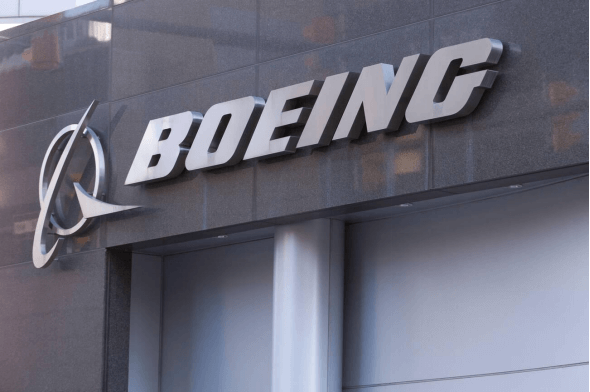
Boeing has a strong defense and space business, with programs like the KC-46 tanker, the F/A-18 Super Hornet, the AH-64 Apache helicopter, and the Space Launch System (SLS). These programs provide stability and diversification for its revenue, growth, and innovation potential. Some recent news for Boeing includes resuming 787 deliveries, opening a new distribution facility in Germany, launching Artemis I with its SLS core stage, celebrating 50 years of F-15 innovation, and securing commitments from Air India and Saudi Arabian Airlines for 320 airplanes.
Analysis of Strengths, Weaknesses, Opportunities, and Threats
Boeing operates in a complex and dynamic environment that presents challenges and opportunities for its business. One of the main challenges is the COVID-19 pandemic, which has reduced air travel demand and disrupted supply chains, affecting Boeing’s commercial aircraft sales and deliveries. However, Boeing expects a recovery in air travel demand and passenger confidence as vaccination rates increase and travel restrictions ease.
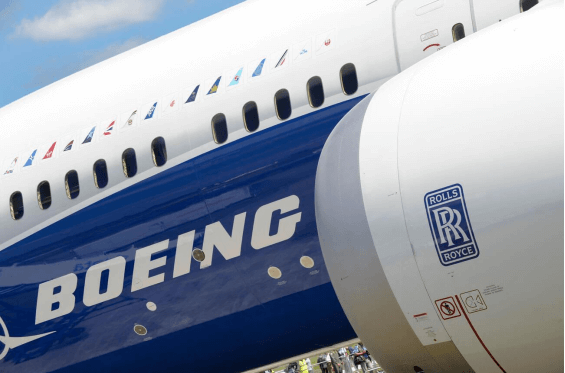
Another challenge is the 737 MAX issue, which resulted in significant financial losses, reputational damage, regulatory scrutiny, legal liabilities, and customer cancellations for Boeing after two fatal crashes in 2018 and 2019. However, after implementing design changes and safety enhancements, Boeing has resumed deliveries and operations of the 737 MAX in several markets. On the other hand, one of the main opportunities for Boeing is investing in new technologies, such as sustainable aviation fuels (SAF), digital solutions, artificial intelligence (AI), additive manufacturing (AM), autonomous systems, hypersonic vehicles, etc. These technologies can create competitive advantages for Boeing and enable new market opportunities.
Reasons to Invest in Boeing Stock
BA stock may be an excellent long-term investment in the aerospace industry, as it is a market leader with a strong brand, loyal customers, global presence, diversified portfolio, innovation capabilities, improved financial performance, large backlog, and growth opportunities.
Lockheed Martin Corp (NYSE: LMT) - Focus on Defense, Technology, and Spacecraft
Lockheed Martin Corp (NYSE: LMT) is the world’s leading defense contractor, with $67.5 billion in sales in 2022, mainly from U.S. government contracts. The company has four segments: Aeronautics, Missiles and Fire Control, Rotary, Mission Systems, and Space, providing products and services for fighter jets, missile defense, space exploration, helicopters, and cyber security. LMT stock price, as of June 8, 2023, was $465.14 with a market cap of $118.39 billion, a P/E ratio of 21.10, and a dividend yield of 2.62%.
Current Operations and Financials
Lockheed Martin’s net sales and earnings were slightly higher in the first quarter of 2023 than in the same quarter of 2022, at $15.1 billion and $1.7 billion, respectively. The company generated $1.6 billion in cash from operations and $1.3 billion in free cash flow and returned $1.3 billion to shareholders through dividends and buybacks. The Space segment was the best performer, while the other three segments saw lower sales and profits.
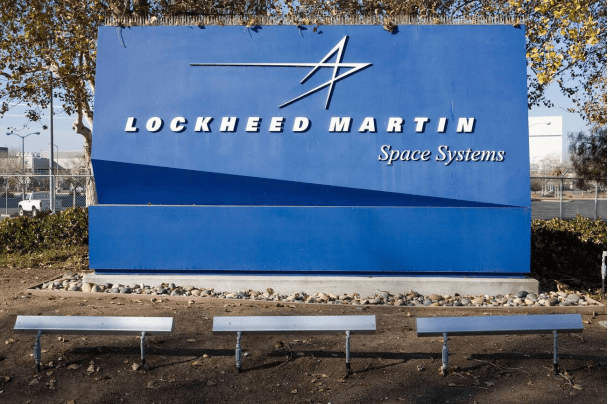
Recent Developments and News
Lockheed Martin has achieved several milestones and secured new business opportunities highlighting its leadership in the defense, technology, and spacecraft sectors. These include a contract for the first U.S. sea-based hypersonic missile program, Conventional Prompt Strike (CPS), which aims to develop a weapon that can travel faster than Mach 5 and strike targets anywhere on Earth within an hour. The company also delivered the first F-16 fighter aircraft out of its new Greenville, South Carolina factory, which will produce F-16s for Bahrain, Bulgaria, Slovakia, Taiwan, and Morocco as part of a $62 billion contract. Additionally, the company got selected to provide 88 F-35 fifth-generation fighter aircraft to Canada as part of its Future Fighter Capability Project (FFCP), which will replace Canada’s aging CF-18 fleet and enhance its interoperability with allies.
Analysis of Strengths, Weaknesses, Opportunities, and Threats
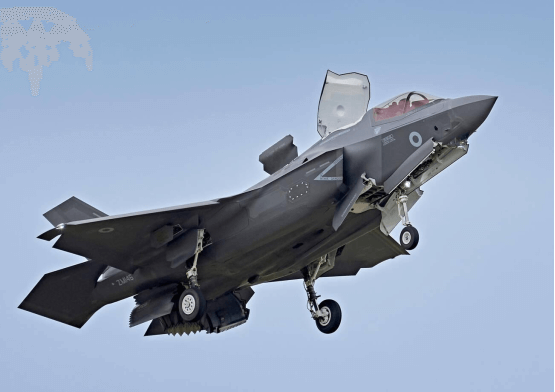
Lockheed Martin has a diverse portfolio, stable customers, innovative capabilities, and strong financials. It can grow its business by tapping into government priorities such as the U.S. Navy’s FFG(X) frigate program or the U.S. Air Force’s Next Generation Air Dominance (NGAD) program; international markets such as India’s multi-role fighter aircraft tender or Japan’s missile defense system; new technologies such as hypersonic weapons or quantum computing; and adjacent sectors, such as energy or health care.
However, Lockheed Martin faces challenges like U.S. government dependence, which accounts for about 70% of its revenue and exposes it to political and budgetary uncertainties; cost and technical risks, which could result in delays, overruns, or failures in complex programs such as the F-35 Joint Strike Fighter or the Orion spacecraft; cyber and security threats, which could compromise its data or systems and affect its operations or reputation; and environmental or legal issues or lawsuits for violating regulations or standards related to emissions, waste, human rights, or corruption.
It also faces threats like budget uncertainty, which could affect its future revenue and profitability due to changing defense spending priorities or fiscal constraints; competition, which could erode its market share or margins due to rivals such as Boeing Co or Northrop Grumman Corp offering better products or services at lower prices.
Reasons To Invest in Lockheed Martin Stock
LMT stock may appeal to investors who value the company’s solid financial performance, leading position in the defense industry, diversified portfolio of products and services, robust pipeline of opportunities, culture of innovation and research, and digital transformation strategy.
Raytheon Technologies (NYSE: RTX) - A Leader in Innovation and Integration
Raytheon Technologies Corporation (RTX) is the world's largest aerospace and defense company, with four segments: Collins Aerospace, Pratt & Whitney, Raytheon Intelligence & Space, and Raytheon Missiles & Defense. The company got formed in 2020 by the merger of United Technologies Corporation and Raytheon Company. The company reported first-quarter 2023 sales of $17.2 billion, up 10 percent versus the prior year, and adjusted EPS of $1.22, up 6 percent versus the previous year. The company also reaffirmed its outlook for the full year 2023.
RTX is on the NYSE and the BMV. As of June 8, 2023, the stock price was $99.51 per share on the NYSE and Mex$1,650.00 on the BMV. The stock has a market capitalization of $145.38 billion and a price-to-book ratio of 1.89. The stock has gained 4.16% in the past month and 0.27% in the past year. The company pays a quarterly dividend of $0.59 per share, with a dividend yield of 2.46%.
Current Operations and Financials
Raytheon Technologies operates in two primary segments: commercial aerospace and defense. The commercial aerospace segment consists of Pratt & Whitney aircraft engines and Collins Aerospace systems, which provide products and services for commercial airlines and other aviation customers. The defense segment consists of Raytheon Intelligence & Space (RIS) and Raytheon Missiles & Defense (RMD), which provide solutions for intelligence, surveillance, reconnaissance, cyber security, space systems, air and missile defense, precision weapons, electronic warfare, training, and mission support.
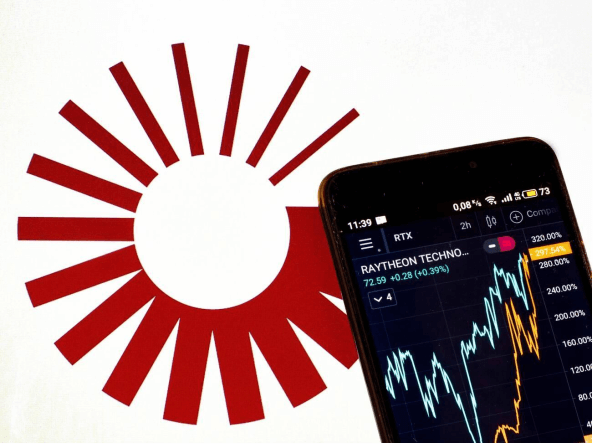
In the first quarter of 2023, the commercial aerospace segment had sales of $10.8 billion, up 16% year-on-year, driven by air traffic recovery and higher OE production rates. The segment had an adjusted operating profit of $1.2 billion, up 38% year-on-year. The defense segment had sales of $7.2 billion, up 2%, driven by higher sales in advanced technology and air power programs. The segment had an adjusted operating profit of $665 million, down 13%.
Recent Developments and News
Raytheon Technologies has strengthened its commercial aviation business by acquiring Collins Aerospace and Pratt & Whitney, two leading suppliers of aircraft systems and engines. The company has also invested in innovation and growth areas, such as hypersonic weapons, cybersecurity, and space while delivering solid financial results and returning capital to its shareholders. Raytheon Technologies is well-positioned to capture the opportunities in the recovering commercial aerospace market and the growing defense market as it leverages its scale, synergies, and technology portfolio.
Analysis of Strengths, Weaknesses, Opportunities, and Threats
Raytheon Technologies has several strengths that give it a competitive edge, such as a diversified portfolio across various segments, a strong innovation capability backed by significant investments in research and development, a global presence with operations in over 80 countries and customers in over 150 countries, a record backlog of $180 billion as of March 31, 2023, and a solid balance sheet with ample liquidity.

However, the company also faces some weaknesses and threats that could limit its growth potential, such as integration risks associated with the merger of Raytheon and United Technologies that could result in operational disruptions or failure to achieve expected synergies, macroeconomic threats such as the COVID-19 pandemic that could adversely affect air travel demand and commercial aerospace revenues, regulatory uncertainties such as changes in U.S. government spending priorities or export controls that could affect defense revenues, competitive pressures from rivals such as Lockheed Martin Corporation or Boeing Company, and legal or reputational risks from potential litigation or compliance issues related to environmental or social matters. Despite these challenges, Raytheon Technologies has several opportunities to leverage its strengths and expand its market position, such as hypersonics, space systems, new geographies, and digital transformation.
Reasons To Invest in RTX Stock
The company has a diversified portfolio, a strong innovation capability, a global presence, a record backlog, and a solid balance sheet. The company can leverage its strengths to capture the opportunities in the recovering commercial aerospace market and the growing defense market while rewarding shareholders with attractive returns through dividends and share repurchases.
Comparison of BA, LMT, and RTX

In this section, we will compare the financials, growth potential, dividend yields, risks and challenges, and pros and cons of investing in Boeing Co (BA), Lockheed Martin Corp (LMT), and Raytheon Technologies (RTX).
Comparison of financials, growth potential, and dividend yields
The table below summarizes some key financial metrics of the three companies as of May 25, 2023:
|
Metric |
BA |
LMT |
RTX |
|
Revenue (Q1 2023) |
$17.9 billion |
$15.1 billion |
$17.2 billion |
|
Revenue Growth (YoY) |
28.09% |
0.66% |
10% |
|
Operating Margin (Q1 2023) |
9.2% |
10.8% |
11% |
|
EPS (Q1 2023) |
$0.79 |
$6.56 |
$1.22 |
|
EPS Growth (YoY) |
N/A |
(4.38)% |
6% |
|
Market Cap (May 25, 2023) |
$119.88 billion |
$115.23 billion |
$136.85 billion |
|
P/E Ratio |
N/A |
21.01 |
19.83 |
|
Dividend Yield |
N/A |
2.66% |
2.46% |
As seen from the table, BA has the highest revenue and revenue growth among the three companies, but it also has a negative operating margin and EPS due to the impact of the COVID-19 pandemic and the 737 MAX issue on its commercial aircraft segment. LMT has the lowest revenue and revenue growth among the three companies, but it also has the highest operating margin and EPS due to its strong defense business and stable government contracts. RTX has a balanced revenue and revenue growth among the three companies and a positive operating margin and EPS due to its diversified portfolio across commercial aerospace and defense segments.
Pros and Cons of Investing in Each Stock
Based on our analysis above, we can summarize some pros and cons of investing in each stock as follows:
Boeing Stock Pros
● Market leader with a strong brand, loyal customers, global presence, and diversified portfolio
● Innovation capabilities with investments in new technologies such as hypersonics, space systems
● Improved financial performance with higher revenues and deliveries
● Large backlog with commitments from customers such as Air India or Saudi Arabian Airlines
BA Stock Cons
● Negative operating margin and EPS due to the COVID-19 pandemic and 737 MAX issue
● Reputational damage, regulatory scrutiny, and legal liabilities due to 737 MAX issue
● Fierce competition from Airbus in the commercial aircraft market
● Geopolitical tensions affecting international sales
LMT Stock Pros
● Leading defense contractor with stable government contracts
● Diversified portfolio across fighter jets, missile defense, space exploration, helicopters, and cyber security
● Strong financial performance with high operating margin and EPS
● Robust pipeline of opportunities, such as Canada F-35 deal or the U.S. hypersonic missile program
Lockheed Martin Stock Cons
● Low revenue growth due to dependence on U.S. government spending
● Cost and technical risks associated with complex programs such as F-35
● Cyber and security threats compromising data or systems
● Regulatory or legal changes affecting export controls or compliance requirements
RTX Stock Pros
● Largest aerospace and defense company with a diversified portfolio across commercial aerospace and defense segments
● Strong innovation capability backed by significant investments in research and development
● Balanced revenue growth across segments driven by air travel recovery and defense spending
● A solid balance sheet with ample liquidity
Raytheon Stock Cons
● Integration risks associated with the merger of Raytheon and United Technologies
● Macroeconomic threats such as the COVID-19 pandemic affecting commercial aerospace revenues
● Competitive pressures from rivals such as General Electric or Honeywell in the commercial aerospace market
● Legal or reputational risks from potential litigation or compliance issues related to environmental or social matters
How To Invest in Aerospace and Defense Stocks With VSTAR
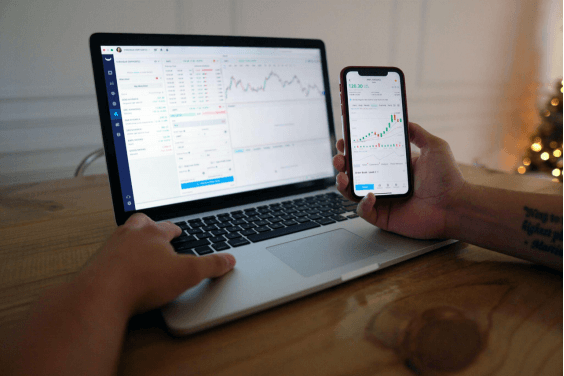
Now that you have learned about the top 3 best aerospace and defense stocks to buy now, you might be wondering how to invest in them. There are three ways to invest in aerospace and defense stocks: holding the share, buying an option, or trading a CFD. In this section, we will explain each way briefly and compare them.
Holding the Share
Holding the share means buying and owning the actual stock of an aerospace and defense company. You can benefit from the stock's capital appreciation and dividend payments. However, holding the share also has some drawbacks, such as high trading fees, low leverage, limited market access, and tax implications.
Buying an Option
Buying an option means buying a contract that gives you the right but not the obligation to buy or sell a stock at a specified price and time. This way, you can benefit from the stock's price movements without owning it. However, buying an option also has drawbacks, such as high volatility, time decay, limited liquidity, and complex strategies.
Trading a CFD
Trading a CFD means trading a contract that reflects the price difference between a stock's opening and closing prices. This way, you can benefit from the stock's price movements without owning it. Trading a CFD has many advantages over holding the share or buying an option, such as low trading fees, high leverage, wide market access, and no tax implications.
Why Trade Aerospace and Defense Stocks CFD With VSTAR?

VSTAR is a global regulated trading platform that offers low fees, high leverage, and wide market access. With VSTAR, you can trade over 1000 markets, including BA, LMT, and RTX, with zero commission and super-tight spreads. You can also use the user-friendly app to trade on the go and practice with $100,000 risk-free demo accounts.
How To Trade Aerospace and Defense Stocks CFD With VSTAR – Quick Guide
Trading aerospace and defense stocks CFD with VSTAR is easy and fast. Here are the steps to follow:
● Download the VSTAR app from Google Play or App Store and register for an account.
● Deposit funds to your account using one of the supported payment methods, such as Visa, Mastercard, International Bank Wire, Tether, Skrill, Neteller, SticPay, or Perfect Money.
● Choose an aerospace or defense stock you want to trade from the popular markets section or search for it using the search bar.
● Tap the buy or sell button depending on your trading direction and enter the amount you want to trade.
● Set your stop loss and take profit levels to manage your risk and reward ratio.
● Confirm your trade and monitor your position using the open positions section.
Conclusion
In this article, we discussed the top 3 best aerospace and defense stocks to buy now: Boeing Co (BA), Lockheed Martin Corp (LMT), and Raytheon Technologies (RTX). We also compared their financials, growth potential, dividend yields, risks and challenges, and pros and cons. Finally, we explained how to invest in aerospace and defense stocks with VSTAR, a globally regulated trading platform that offers low trading fees, high leverage, wide market access, and a user-friendly app.
The aerospace and defense industry is a dynamic and exciting sector that offers many investment opportunities for traders interested in the innovation and integration of air, land, sea, space, and cyberspace domains. However, the industry faces challenges and uncertainties that could affect its performance and stock prices. Therefore, traders should research and analyze before investing in aerospace and defense stocks. If you are ready to invest in aerospace and defense stocks today, download the VSTAR app and register for an account.
